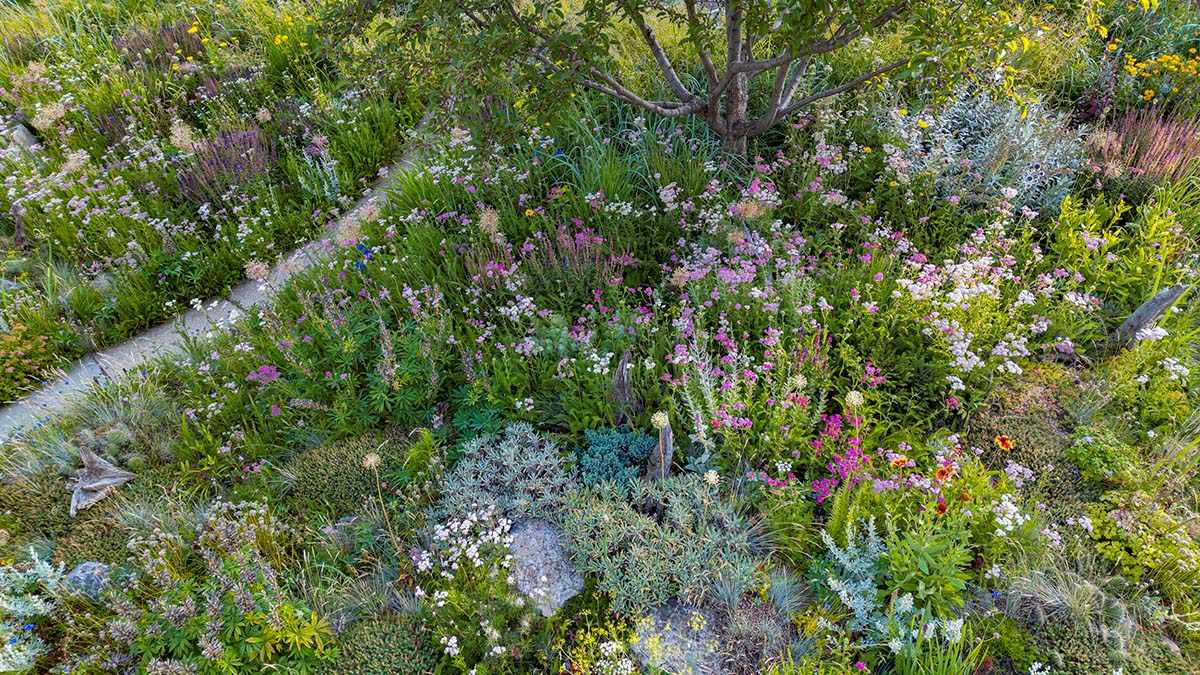
Field Notes: Nathaniel Hannemann of PolyFlora Studio
Edmonton horticulturist Nathaniel Hannemann designs vibrant, ever-changing meadows that bring beauty, biodiversity, and a sense of community to the landscapes he transforms.
In Edmonton, Alberta, where prairie, aspen parkland, and boreal forest meet, designer and horticulturist Nathaniel Hannemann is bringing meadows to life. Through his practice, PolyFlora Studio, founded in 2025, he creates immersive, seasonal meadow landscapes that shift with the seasons, nurture biodiversity, and connect people to place.
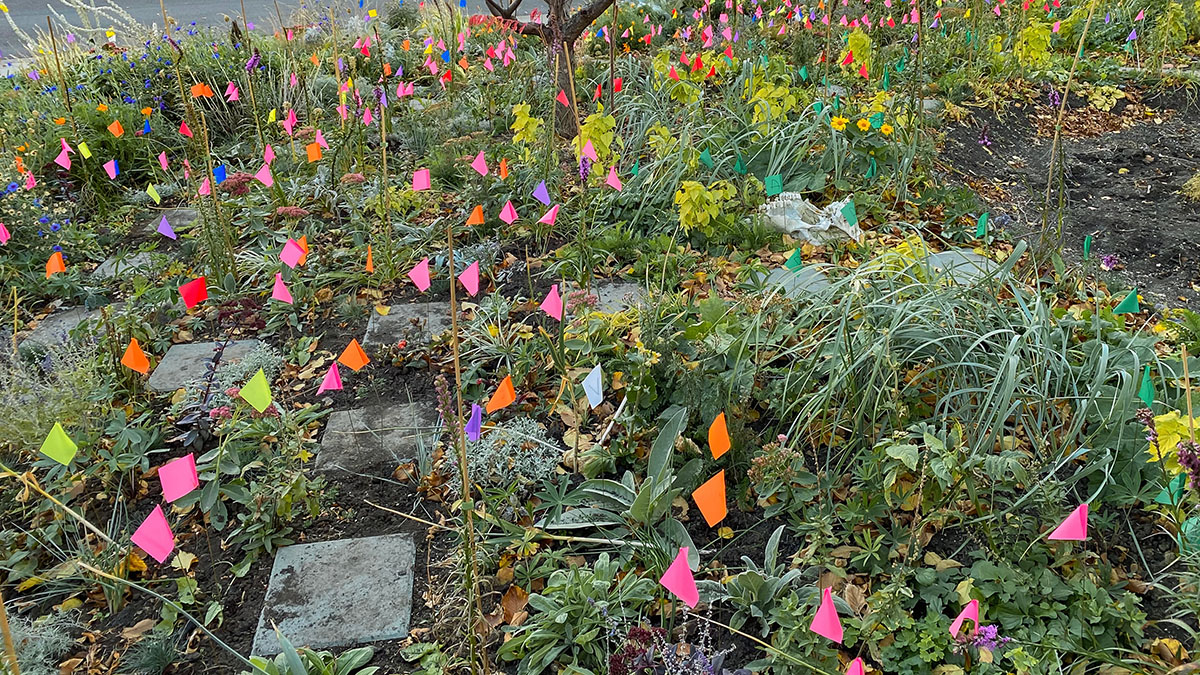
With a background in production horticulture from Olds College, Nathaniel grows thousands of plants from seed and refines propagation techniques for each species. He uses liners for their resource efficiency and fast establishment, starts others from cuttings or bulbs, and sows some directly on-site. His work blends artistry, ecology, and craftsmanship to turn spaces into living, evolving tapestries of color and habitat.
In the second edition of our ongoing series, Field Notes, we interviewed Nathaniel about his vision for un-lawning our landscapes, the species he champions, and how creating and sharing his own meadow has transformed both his work and community.
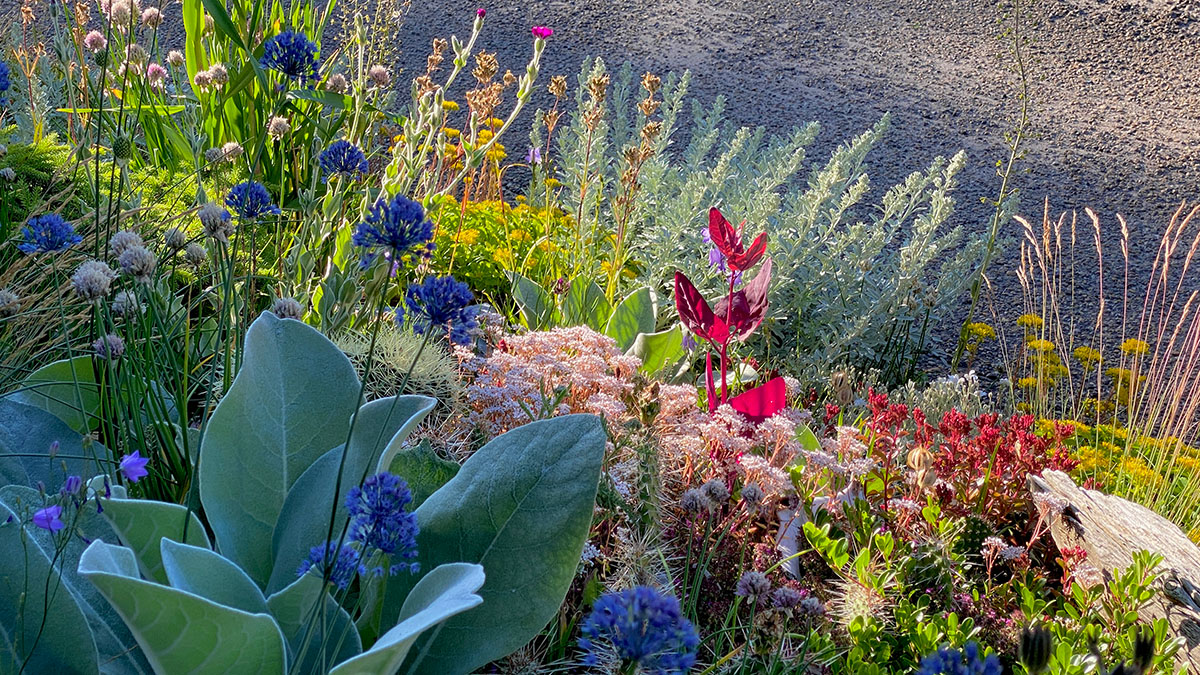
What does a meadow mean to you—and how do you translate that into design?
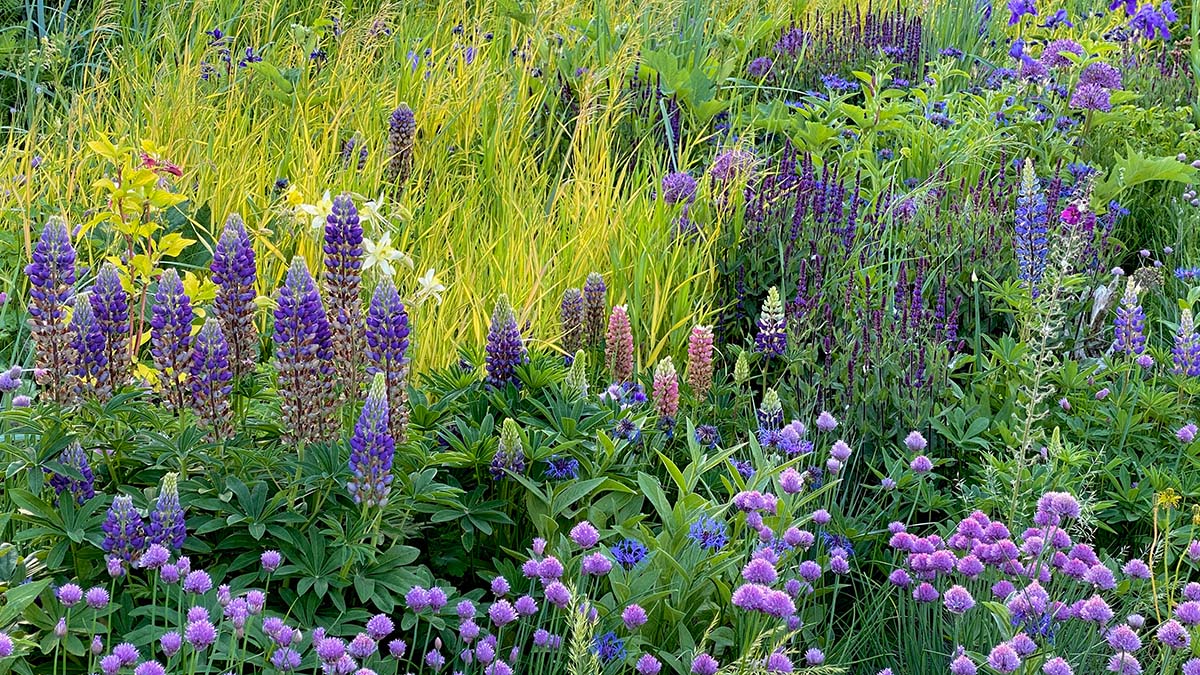
There is the fantasy of what a meadow is and then there is the scientific definition. A meadow can feel magical with bees buzzing through the air, grasses swaying in the breeze, and wildflowers blooming in profusion. But step back and you’ll see that, botanically speaking, a meadow is defined by a community of interwoven grasses and forbs.
To me, meadows are not just another style. Guided by people, they are tapestries of innumerable species that thread together a living, breathing, evolving composition. Developed centuries ago by the British, lawns are one of the most dominant softscape types. Yet they are emotional and ecological voids. In our era of ecological collapse, an unknown climate, and social disconnection, the need to “un-lawn” our landscapes and build biodiverse, resilient, and joyful habitats is both urgent and powerful. The meadow I designed, planted, and steward at my home garden has been a material shift from the rigid control of convention, to exuberant abundance. It’s full of life and totally gorgeous.
Meadows hold immense beauty, peace, and sophistication in their visual and ecological complexity. There is always something alive, something to observe, to learn from, to share. Flowers attract pollinators and at a larger scale, meadows attract people, and people build community. I welcome all kinds of folks to my personal garden throughout the year – strangers, neighbours, friends, family…. It’s always so much fun and the excitement is palpable. And sometimes in quiet moments visitors are moved to tears, and sometimes I join in. The acts of visioning, creating, caring for, and sharing my meadow garden has been life changing!
If you could only plant five species in a meadow, which would you choose—and why?
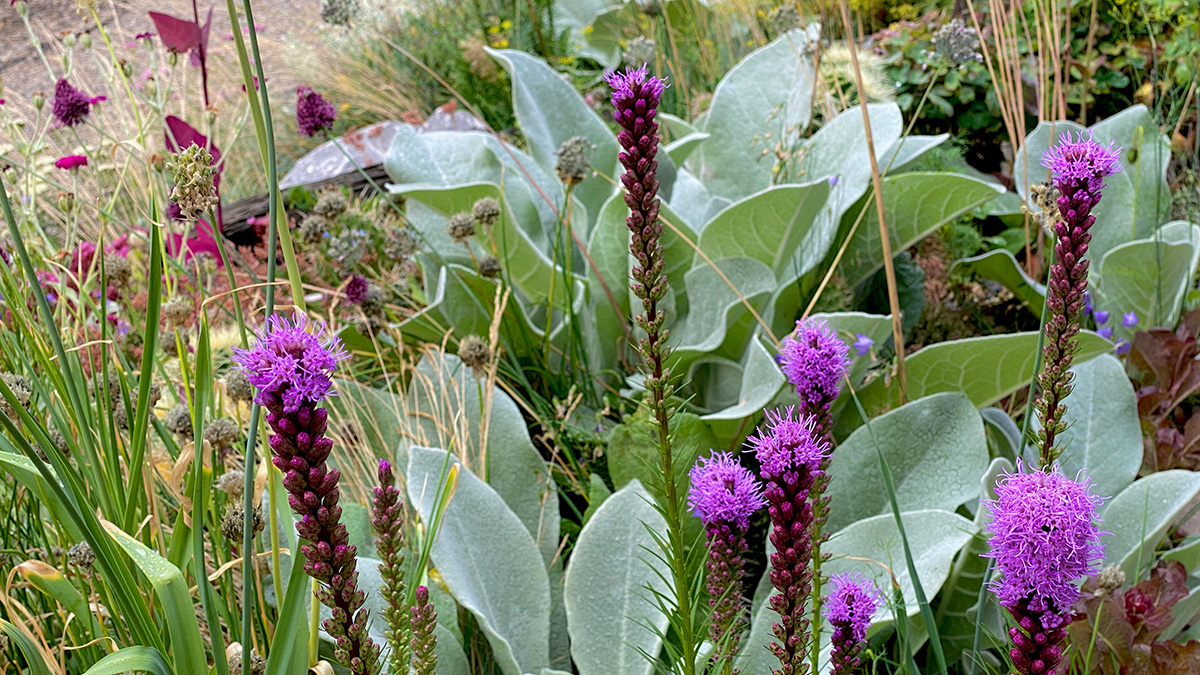
I’ll provide my top favorite meadow species, but first I’m pushing back on the limitation, I can’t help myself. Five species is far too few for creating biodiverse habitats like meadows. Prairie grasslands can have dozens of plant species per square meter, and they are, in fact, one of the most biodiverse regions of the planet.
When selecting plants for a designed meadow they need to serve different functions, fill various layers, and look good throughout the year. There needs to be ground covers, seasonal bloomers, and taller emergent species. Plants need to bloom throughout the growing season and capture snow in the winter. Plant selection should consider not just human interests, but the needs of the broader ecosystem. Threatened species, or species that are vital food sources for at-risk animals can be prioritized, too.
Having said that, here’s my list of five. These plants are attractive and easy to propagate, some are native to my area, and most pair well with each other.
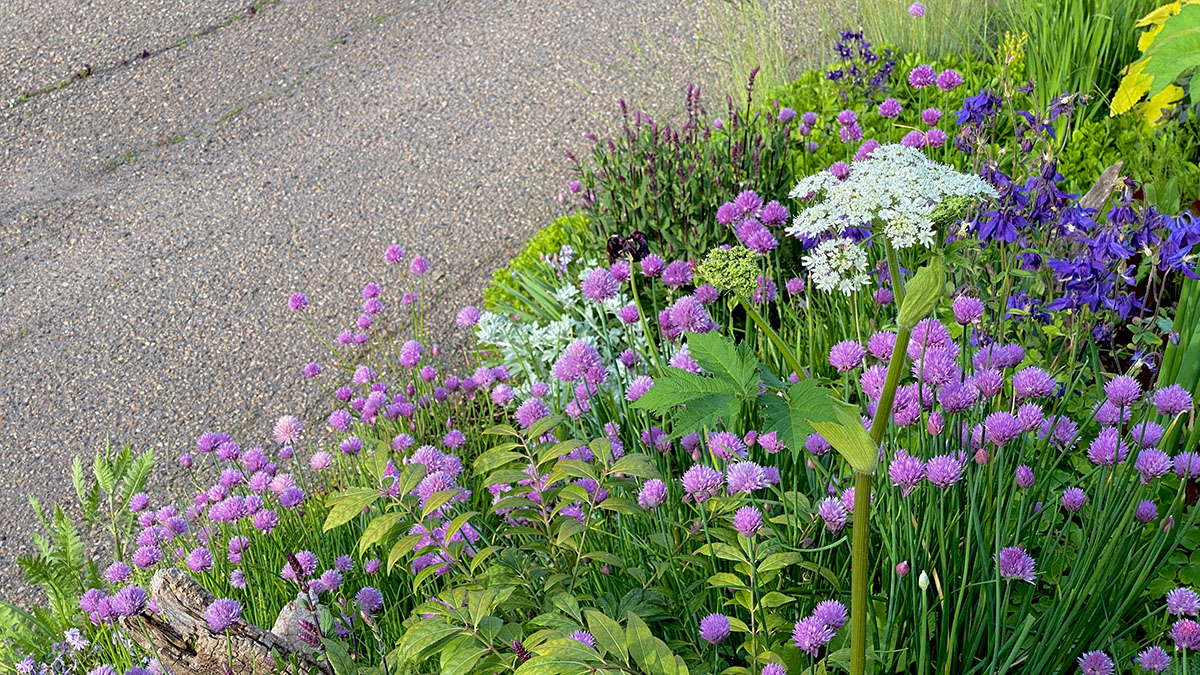
(1) Chives | Allium schoenoprasum
I adore ornamental onions for their generous blooms, range of colours, drought tolerance, ease of growth, excellent winter structure, and attractiveness to bees. Chives are often underrated in gardens, but they are a floriferous and versatile native plant.
(2) Twisted Leaf Onion | Allium obliquum
Twisted Leaf Onion is tall, and has chartreuse flowers and glaucous, gray-green leaves. When blooming in my home garden, they are hugely popular with bumblebees. I will often see six, small bumblebees foraging from one umbel at the same time. This Allium keeps its leaves into late summer, and its dead flowers look fantastic throughout winter as they remain standing above the snow.
(3) Common Yarrow | Achillea millefolium
Common Yarrow is another native species that has been hybridized and bred into many different colours. They have excellent drought tolerance, long lasting blooms, strong winter structure, and interesting ferny leaves. They function well as a taller ground cover that glues plantings together. I love the mixed, pink flower colours depicted, which includes the natural, white form. In my home garden they feed numerous micro moths, bees, flies, beetles, and other arthropods.
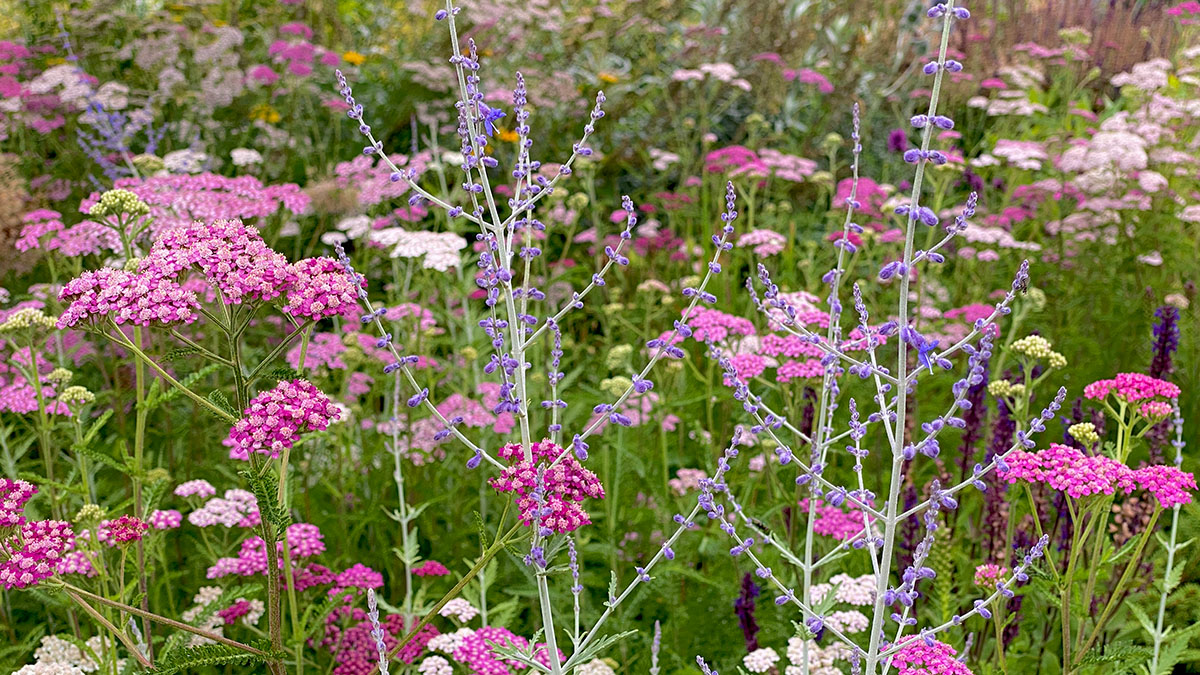
(4) Dense Blazing Star | Liatris spicata
Dense Blazing Star is a fantastic drought-tolerant, mid to late summer flower. They bloom top down, unlike most plants, and when repeated across a meadow, they provide excellent vertical structure. Their flowers are an electric magenta, and their leaves are equally as interesting, looking somewhat pine-like. In my home garden they feed bees, butterflies, and moths.
(5) Prairie Sage | Artemisia ludoviciana
Prairie Sage is a native, silver-leaved plant common in the prairies. This species is large, vigorous, and competes well with tall, aggressive grasses. Its silver leaves add contrast and balance to the jewel tones of other plants, and that silver colour practically glows in the dark. Its early summer flowers are a soft yellow colour, but tend to be overlooked.
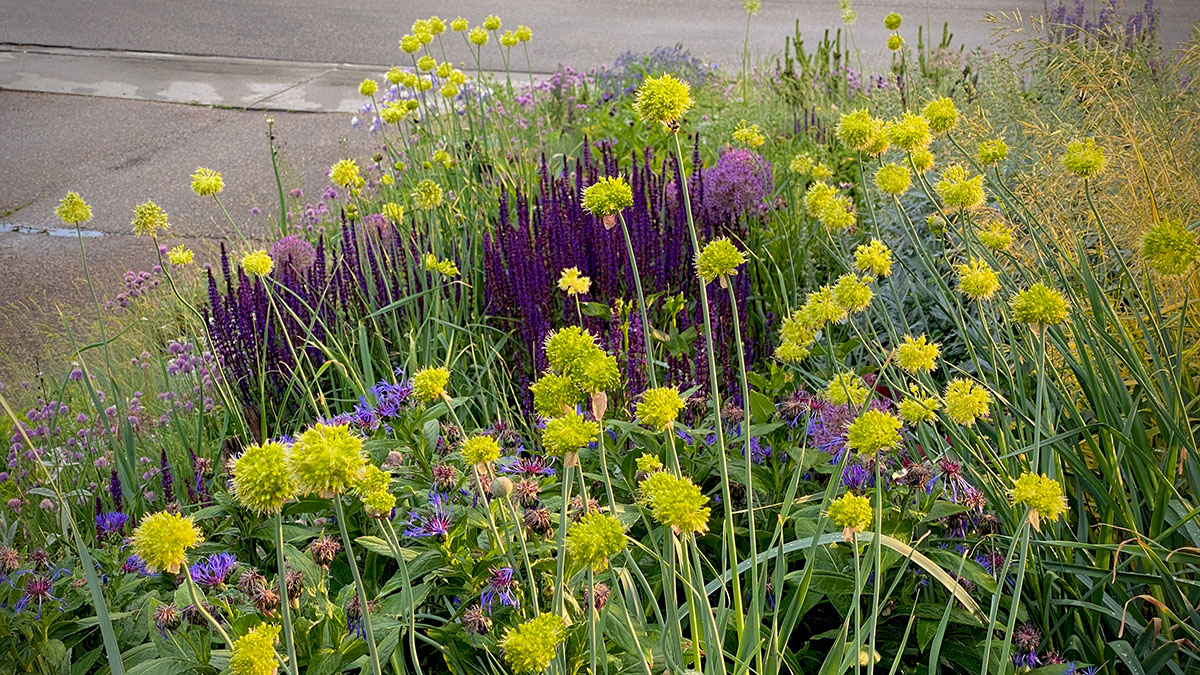
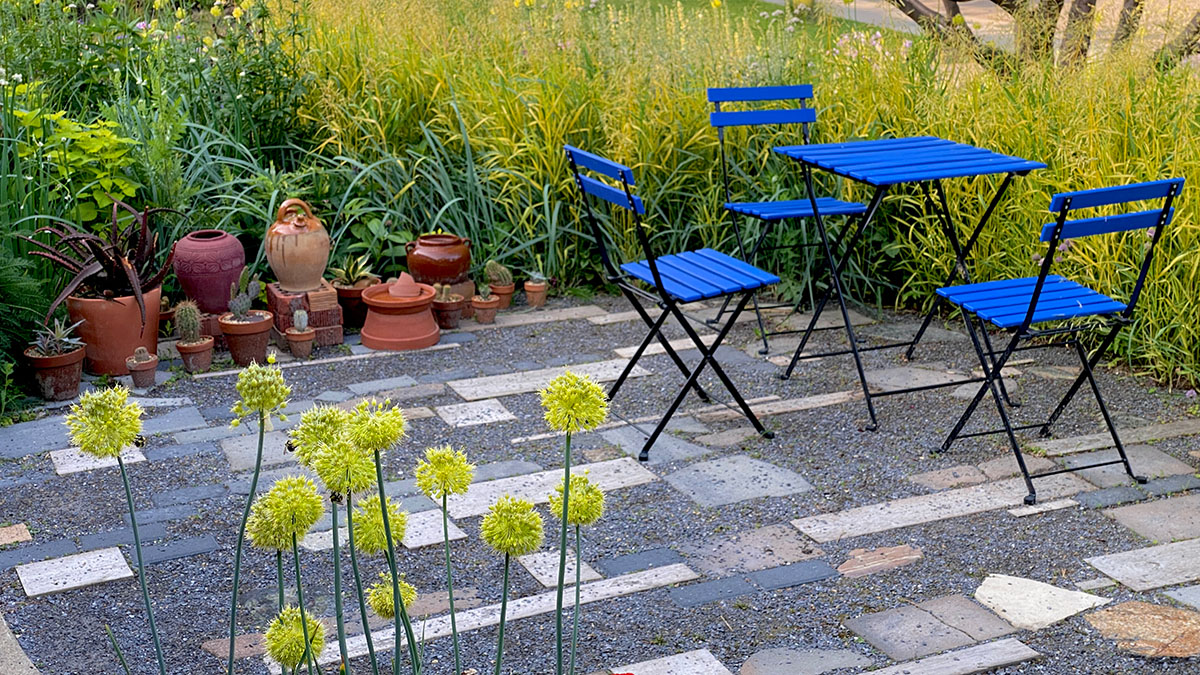
What’s the biggest misconception clients have about meadows?
Clients tend to think that because meadows have more plants, they are difficult to care for. Most people are comfortable with conventional gardening where each plant is tended to in isolation. They spend time mulching, deadheading, watering, fertilizing, and weeding their gardens. But meadows don’t work that way. They are dense, biodiverse, plant systems that can be designed to be managed with only a few seasonally timed interventions.
In this climate, meadows typically need just a single spring cut-back to remove old plants to make room for new growth, bulbs, and seedlings. That single cut back is not the easiest garden task but the seasonal output afterwards is extraordinary. I generally track the hours for my spring cut backs, and it’s comparable to weekly lawn mowing throughout the year. Once cut back is completed, the meadow performs on its own for the rest of the year, revealing its true form as a living work of art!
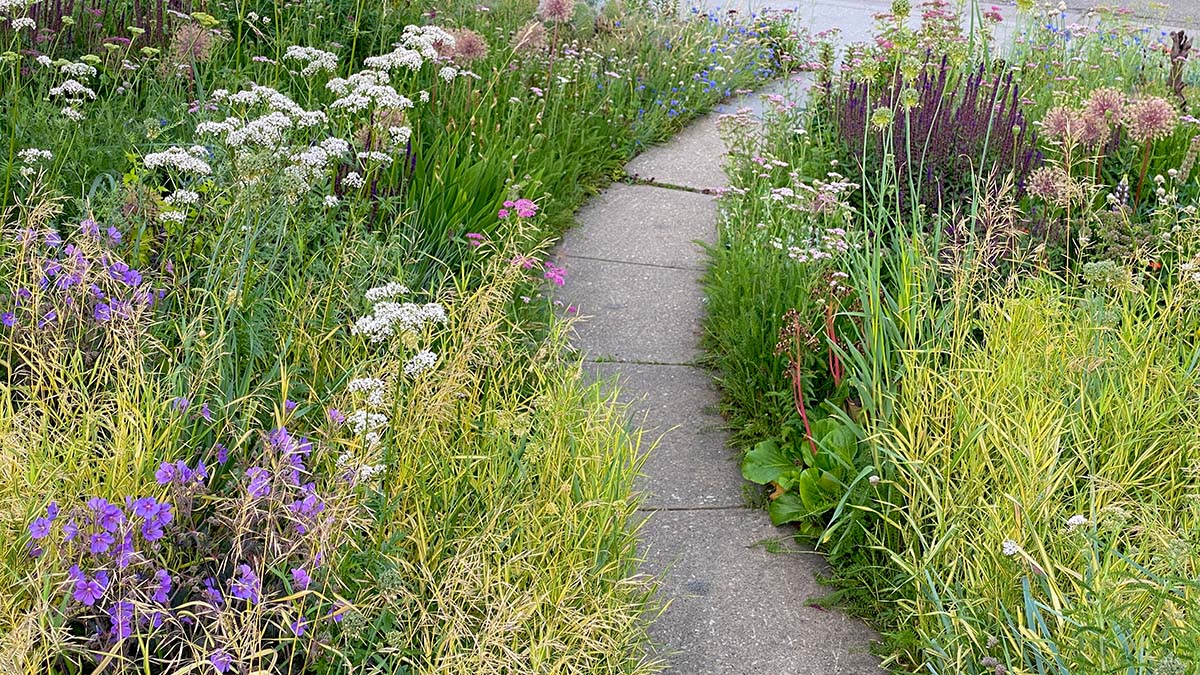
Tell us about a moment in the field that changed how you think about plant communities.
I can’t remember a precise moment, but growing up I spent a great deal of time outside the city on the land during weekends and summer breaks. My family has a cabin in a natural area which includes fields, forests, and wetlands. Here, I learned early on that plants are diverse and respond to their environments and to each other in various ways.
I had a big realization after I made my first meadow at my home garden in the city. Meadows are not just about plants. They innately coexist and cocreate with so many different lifeforms like mushrooms, arthropods, birds, meadow voles, and people. Plant communities really are the foundation though, as they connect, shelter, and nourish humans and more-than-humans alike. For me, this is a way of seeing how meadows are more than the sum of their parts. And, furthermore, this perspective has provided me a new way of understanding and relating to the world.
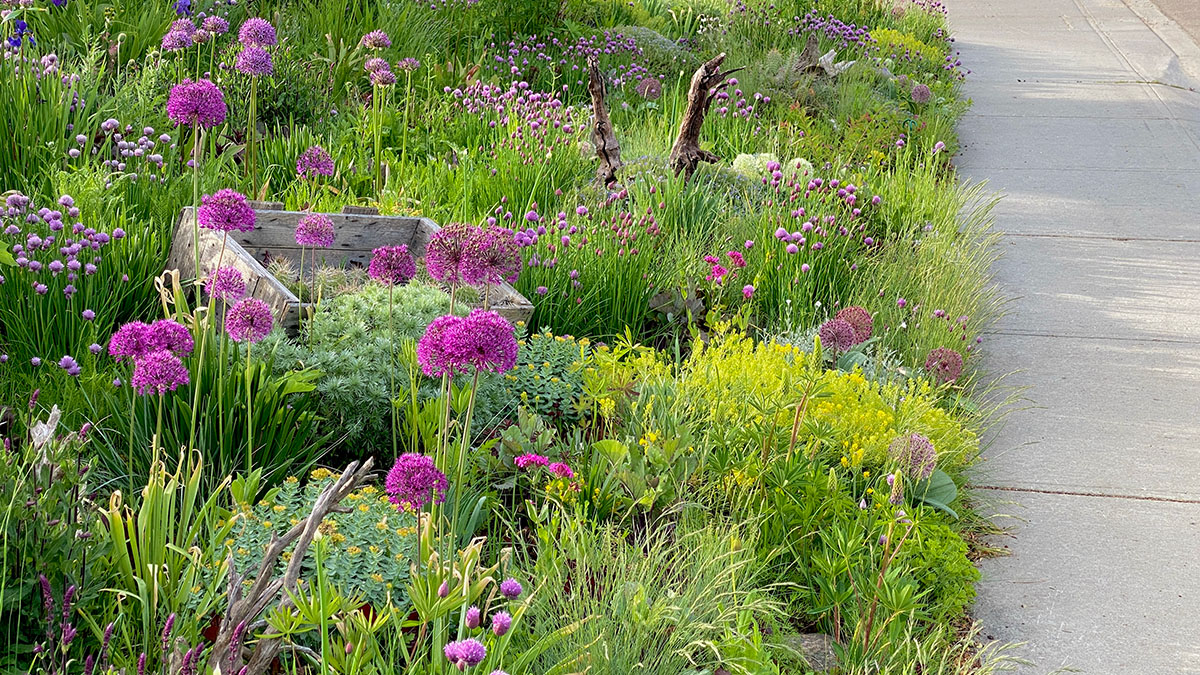
What’s your dream site for a meadow installation—real or imagined?
My dream would be for the city of Edmonton, where I live, to invest in changing all the public green space, currently dominated by monoculture lawns, to designed meadows and other naturalistic plantings. This would be one of the most dramatic, positive changes in the City that I can think of. Imagine more arthropods, birds, and other animals. Imagine cleaner air, beautiful vistas, and a relaxed atmosphere. The City could be a biodiversity hotspot in a world otherwise in decline. Local residents and tourists would benefit immensely. Engaging with the natural world, encountering more beauty, experiencing wonder and curiosity… this can only facilitate beneficial relationships with land, with the more-than-human, and with each other.
I am incredibly privileged to have access to some land where I can create and care for a meadow. Not everyone can. My home garden is located near a few multi-storey apartment buildings, and many residents walk by the garden multiple times a week. I see how it affects them, people are curious! They smile, ask questions, and explore a little of the more-than-human world in front of them. But they can’t make their own meadow where they live without access to land. This is one reason why my dream project would be mass public lawn conversion so people everywhere can benefit.
To explore Nathaniel Hannemann's work and get in touch, visit his website at www.polyflorastudio.ca.
